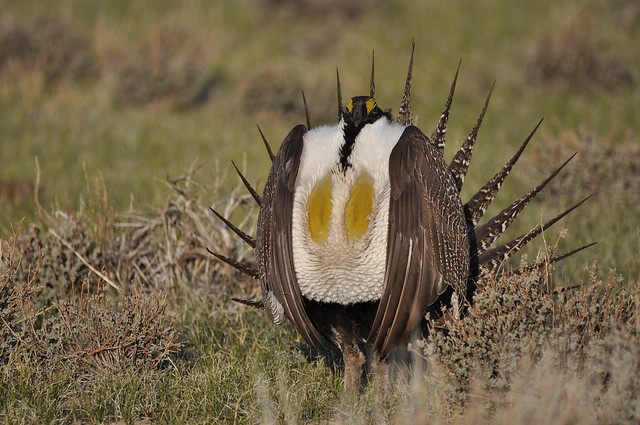
This is a cross-post from the White House Blog.
Today marks an historic win for conservation and communities in the West and for the United States. Thanks to unprecedented conservation cooperation across the western United States, the U.S. Fish and Wildlife Service announced earlier today that the charismatic rangeland bird – the greater sage-grouse – does not need to be protected under the Endangered Species Act (ESA). The greater sage-grouse conservation strategy comprises the largest landscape-level conservation effort in U.S. history and demonstrates that through strong Federal, state, and private collaboration, the ESA can be an effective and flexible tool in encouraging conservation and providing the certainty needed for sustainable economic development in our states and communities.
This success was only possible through close collaboration among western states, the Department of the Interior, USDA, and more than 1,100 ranchers across eleven states. The bipartisan leadership of many western governors, including Colorado Governor Hickenlooper, Wyoming Governor Mead, Nevada Governor Sandoval, and Montana Governor Bullock is a testament that when we work together, we can successfully conserve landscapes and help save species, while providing certainty to rural economies.
Roughly half of the sage grouse’s remaining habitat is found on public lands, primarily managed by the Bureau of Land Management and the U.S. Forest Service. After taking into account extensive public and state input, Federal agencies also announced today the finalization of 98 resource management plans that are based on the best available science and address the primary threats to the sage-grouse and its habitat. These plans and other actions by Federal and state agencies will also help reduce the threat of wildfire in western portions of the range. In total, these plans will put in place protections on nearly 70 million acres of important sage-grouse habitat.
These collective conservation efforts achieve more than protecting one species. The sagebrush habitat is shared with more than 350 other wildlife species, including world-class populations of mule deer, elk, pronghorn and golden eagles. They also provide sustainable development benefits that help local communities and the U.S. economy. More than 1,100 ranchers are voluntarily working with Federal and state agencies to conserve the greater sage-grouse. Since 2010, USDA has partnered with these landowners to conserve or restore 4.4 million acres of key habitat through programs that provide financial assistance for conservation, and hundreds of other properties are enrolled through similar state or Federal programs.
Today’s announcements mark an incredible milestone, proving that collaborative, science-based, forward-looking efforts can conserve an entire landscape. There’s no doubt that important work remains to ensure a bright future for the sage-grouse and the sagebrush habitat. This includes implementing the state and Federal plans, as well as the comprehensive rangeland fire strategy. USDA has announced plans to spend another $211 million by the end of 2018 to help hundreds of ranchers conserve or restore more habitat, bringing the total to 8 million acres. And Congress still needs to pass the Administration’s $45 million proposed increase in funds to help implement these public land management plans. We are confident they will benefit both rural communities and the Western sagebrush landscape now and in the future.



